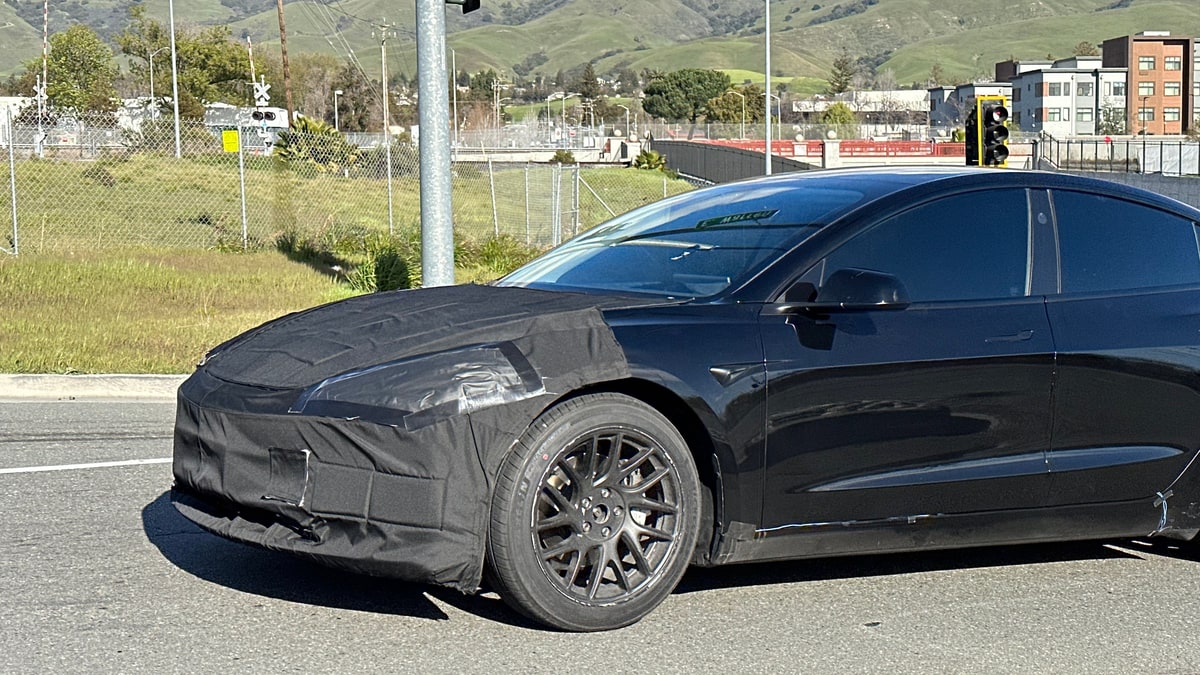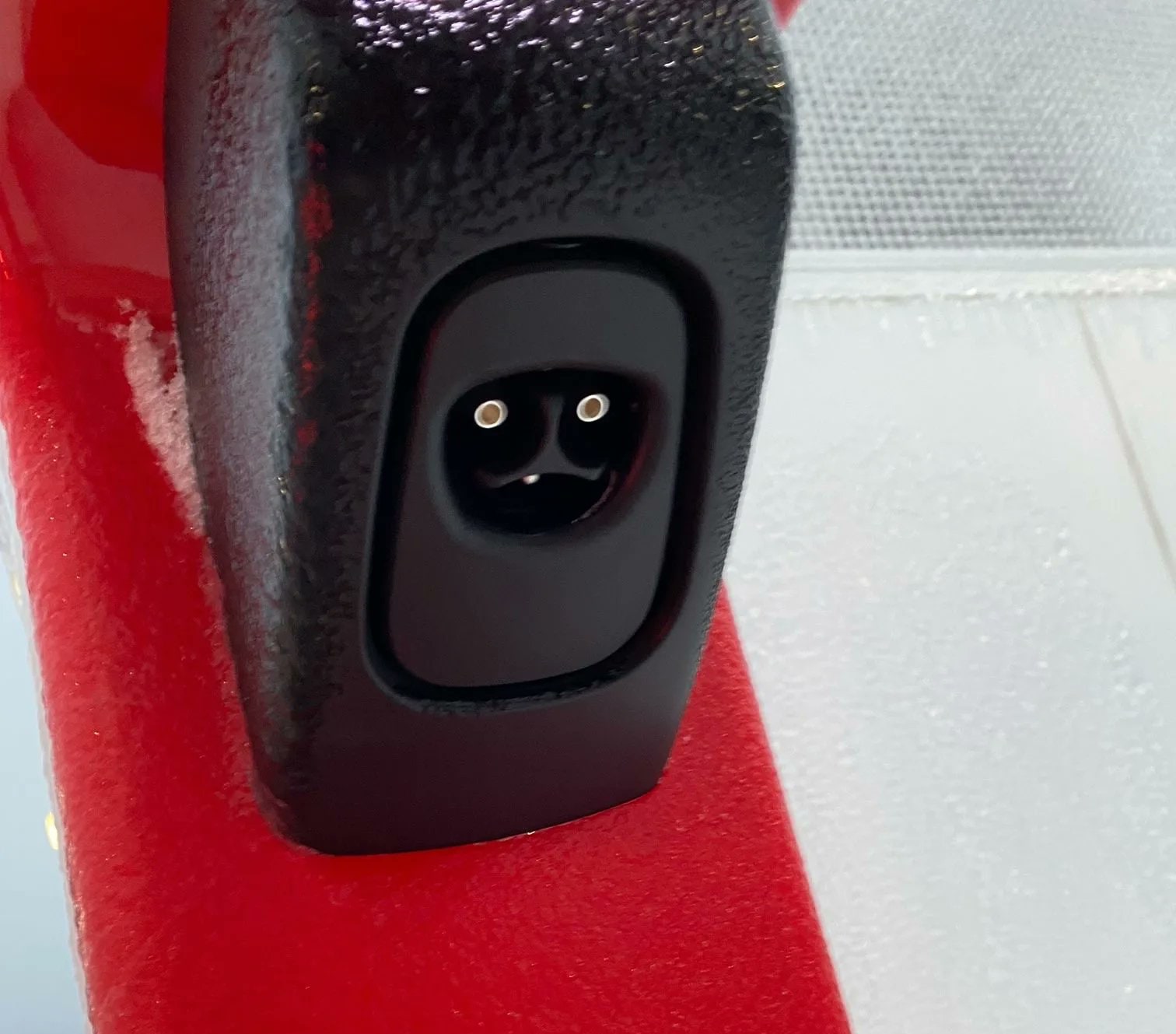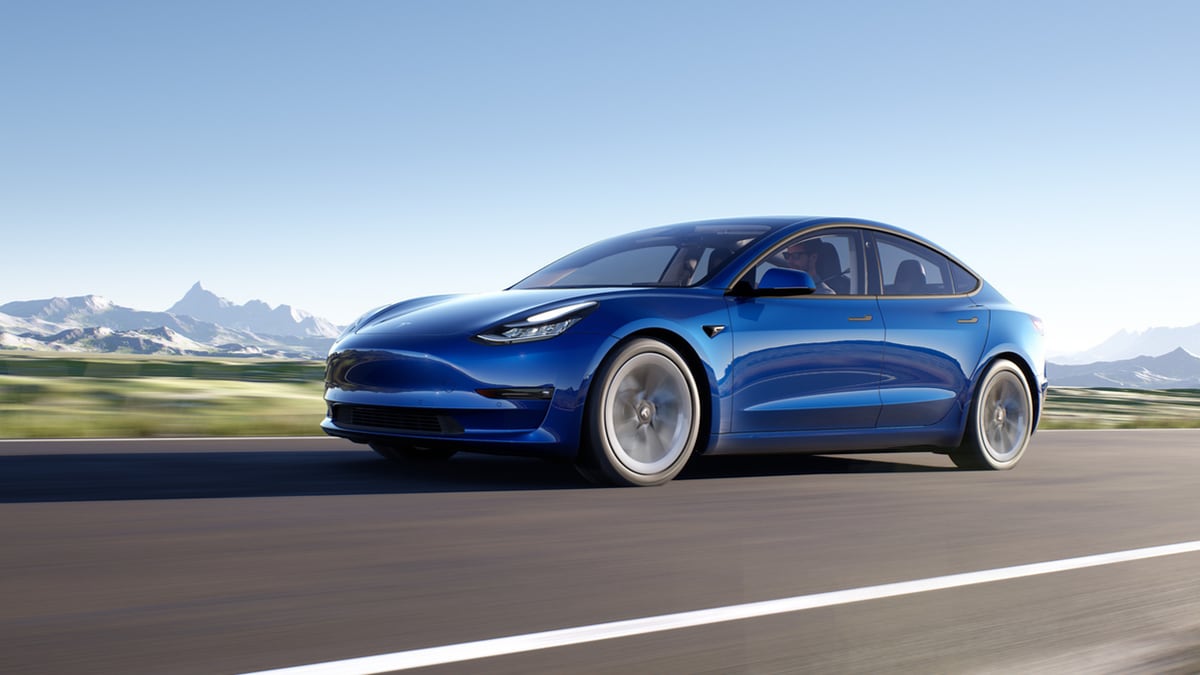By Kevin Armstrong

Tesla's mysterious caped crusader has once again appeared. Twitter and YouTuber The Kilowatts posted pictures of a black Model 3. For months these cars, sporting covers on the front and back, have been noticed in California, but this is the first time we've seen one without aero covers on the wheels. So the refreshed Model 3, known as project Highland, will apparently have new wheels. But some other changes are also revealed in these images.
New Wheels on the Highland
The rims in the Kilowatts post have 14 points of contact with the outer edges instead of the current 10-spoke rims. The spokes are slightly off-center to give a swirl effect, another difference from the straight lines the current rims offer. There is a large circle in the middle where the center cap will go. That circle will replace the five-star piece on the existing wheels.
These wheels offer more coverage, possibly cutting down on wind resistance and giving you a half mile more in range. As we know, Tesla always looks for more ways to improve capacity.
Body Molding Change and Wires
While the wheels draw attention, there may be another change. Check out the side repeater. It almost looks like the body modeling has ben extended around the repeater camera, but it's not terribly clear in the photo and it could just be the reflection. We know that Hardware 4 comes with new cameras, and other evidence points to the side repeater cameras changing the angle that they point. However, the housing of the cameras appears the same as the previous model.
The bumper also appears to have a slightly different shape than the current Model 3, with the top lip appearing to be reduced or moved further down.
It's all a mystery after that. Check out the duct tape used to cover the headlight thoroughly. Previous pictures of these cars had the headlight exposed, it seems there may be some changes there. It was believed cameras were being added to the headlight housing, but that speculation was put to rest with images of HW4-equipped Model S, and Model X spotted in Fremont.
Finally, some wires come from under the car and run along the inside and partially on the outside of the doors before going back under the car.
Reuters reported that Project Highland would go into production in Shanghai in September. This new Model 3 is expected to cut production costs by focusing on reducing the number of components and some interior changes. In addition, the exterior is expected to see some changes to improve efficiency and reduce cost.
By Kevin Armstrong

Tesla is installing the Magic Dock at several locations across the United States, just days after announcing it would expand its Supercharging network to support non-Tesla electric vehicles. The Magic Dock is an accessory that's retrofitted on Superchargers that contains a built-in CCS Combo 1 adapter to allow non-Tesla cars to charge at Supercharging stations.
After meeting with the Biden administration earlier this month, Elon Musk agreed to make at least 7,500 of its chargers available for use by any EV by the end of 2024. This agreement includes at least 3,500 of Tesla's 250-kilowatt Superchargers, and the slower Level 2 destination chargers.
Compatibility and the "Magic Dock"
Tesla's cars in North America use the company's proprietary standard (recently named NACS), so the Tesla-CCS1 adapter is crucial to make the Supercharging stations compatible with other EVs. The "Magic Dock" adapter attaches the CCS1 plug on top of Tesla's NACS plug, enabling non-Tesla EVs to charge at a maximum rate of 250 kW.
How the Magic Dock Works
While Tesla drivers can use the Supercharging stalls as usual, non-Tesla drivers must download the Tesla App, create an account, and sign in to use the "Charge Your Non-Tesla" feature. Once they select a stall, the "Magic Dock" will unlock the CCS1 adapter and attach and lock it to the NACS connector, and the charging process will begin. After charging is complete, the user simply returns the cable with the adapter to the stall. Once the cable is returned, the stall will automatically lock the CCS1 adapter back to the Magic Dock and unlock it from Tesla's NACS port. This creates a seamless and easy experience, regardless of which connector you're using. It also prevents the CCS1 adapter from being stolen.
The "Magic Dock" appears to be relatively simple to retrofit to all Tesla Supercharging stations in North America. However, there may be other issues related to the short charging cable's physical compatibility and the charging inlet's various locations in non-Tesla EVs.
Dock Blocking Concerns
Although Tesla's expansion of its Supercharging network to support non-Tesla EVs is a significant move, it has raised concerns over dock blocking, a phenomenon where non-Tesla EVs block Tesla charging stalls to use them.
Dock blocking could create problems for Tesla drivers, as the charging stalls they need will be occupied by non-Tesla EVs. While some non-Tesla EVs can connect if they park incorrectly, such as parking with the port on the front left, this will block the stalls needed for a Tesla to park on the side of them. Additionally, some non-Tesla EVs may park, taking two spaces to reach the short cable.
Finding Solutions
To prevent dock blocking, Tesla could consider solutions such as using longer cords, providing lockers for approved extension cords, or having parking spots on both sides of the Supercharger to let people park like Teslas on one side and forward cars on the other.
Alternatively, other companies could take advantage of Tesla generously opening up all of its charging technology.
Tesla's expansion of its Supercharging network to support non-Tesla EVs is a significant move that will enable more drivers to access its charging network. However, dock blocking is a concern that must be addressed to prevent frustration and backlash from Tesla drivers. With innovative solutions and further developments, Tesla can ensure the accessibility and convenience of its Supercharging network for all EV owners.
By Kevin Armstrong

For years, auto investors have placed bets on when electric cars would reach price parity with their combustion counterparts. With Tesla's recent price cuts and government incentives, the company has now achieved this milestone for the Model 3. A Model 3 is now less than the average price of a new car, making it a more affordable alternative for drivers looking to transition to electric or upgrade their vehicle.
The Price Gap Between EVs and Gas Cars
According to Bloomberg's analysis, the price gap between the Model 3 and the average new vehicle sold in the US has never been wider. A Model 3 is now $4,930 less than the average price of a new car. Without credits or fuel savings, the sticker price ($42,999 USD) now sits $800 below the cheapest BMW 3 Series, one of its closest competitors.
While Tesla is reducing the price tag, the cost of gasoline-fueled cars has gone in the opposite direction. The average cost of a new vehicle has risen more than $10,000 since the beginning of the pandemic, reaching $47,920 in January. This rise is driven by a shortage of computer chips, raw material inflation, and car manufacturers' decisions to keep inventories low and prices high while investing heavily in developing electric cars.
Expanding EV Market
Tesla's price cuts have sparked a ripple effect among other automakers. Ford has slashed the price of its electric Mustang Mach-E, while Lucid Group offered $7,500 discounts, and Rivian Automotive announced layoffs. In addition, General Motors is slated to launch electric versions of its Chevrolet Blazer and Equinox SUVs later this year, right in the middle of America's first-ever EV price war. Meanwhile, the Model Y has also seen a substantial price cut of $13,000 earlier this year, making it the third-best-selling SUV in the US, behind the Toyota RAV4 and Honda CR-V.
Affordability Driving EV Adoption
That price tag may decrease even further when the refreshed Model 3 appears. Reuters reported that Project Highland would go into production in Shanghai in September. The goal of the refreshed Model 3 is to increase efficiency and cut production costs. We already know Tesla is eliminating the wood trim in the updated version, a cost-saving and environmentally friendly move. While the changes could bring the price down, it is worth noting that when Tesla refreshed the Model S and Model X, the prices jumped by 12% and 15%.
The increasing affordability of Tesla's vehicles may drive the adoption of electric cars and contribute to the growth of the EV market. If Tesla can continue to offer price cuts, it could attract more new buyers as the company ramps up production at its new plants in Austin, Texas, and near Berlin, while expanding capacity in Shanghai. There's never been a better time to buy a Tesla.
Bagikan Berita Ini
















0 Response to "Tesla's Project Highland Model 3: New Wheels and Other Changes Revealed - Not a Tesla App"
Post a Comment